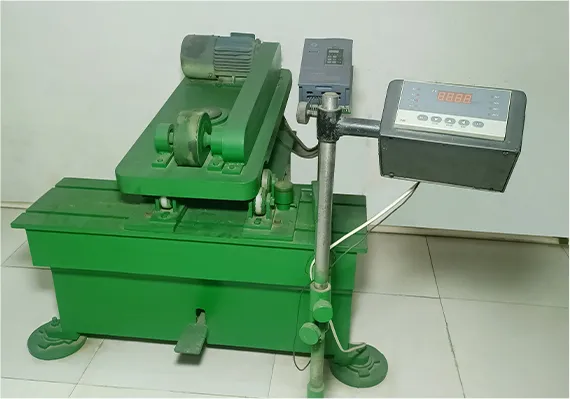 Afrikaans
Afrikaans  Albanian
Albanian  Amharic
Amharic  Arabic
Arabic  Armenian
Armenian  Azerbaijani
Azerbaijani  Basque
Basque  Belarusian
Belarusian  Bengali
Bengali  Bosnian
Bosnian  Bulgarian
Bulgarian  Catalan
Catalan  Cebuano
Cebuano  Corsican
Corsican  Croatian
Croatian  Czech
Czech  Danish
Danish  Dutch
Dutch  English
English  Esperanto
Esperanto  Estonian
Estonian  Finnish
Finnish  French
French  Frisian
Frisian  Galician
Galician  Georgian
Georgian  German
German  Greek
Greek  Gujarati
Gujarati  Haitian Creole
Haitian Creole  hausa
hausa  hawaiian
hawaiian  Hebrew
Hebrew  Hindi
Hindi  Miao
Miao  Hungarian
Hungarian  Icelandic
Icelandic  igbo
igbo  Indonesian
Indonesian  irish
irish  Italian
Italian  Japanese
Japanese  Javanese
Javanese  Kannada
Kannada  kazakh
kazakh  Khmer
Khmer  Rwandese
Rwandese  Korean
Korean  Kurdish
Kurdish  Kyrgyz
Kyrgyz  Lao
Lao  Latin
Latin  Latvian
Latvian  Lithuanian
Lithuanian  Luxembourgish
Luxembourgish  Macedonian
Macedonian  Malgashi
Malgashi  Malay
Malay  Malayalam
Malayalam  Maltese
Maltese  Maori
Maori  Marathi
Marathi  Mongolian
Mongolian  Myanmar
Myanmar  Nepali
Nepali  Norwegian
Norwegian  Norwegian
Norwegian  Occitan
Occitan  Pashto
Pashto  Persian
Persian  Polish
Polish  Portuguese
Portuguese  Punjabi
Punjabi  Romanian
Romanian  Russian
Russian  Samoan
Samoan  Scottish Gaelic
Scottish Gaelic  Serbian
Serbian  Sesotho
Sesotho  Shona
Shona  Sindhi
Sindhi  Sinhala
Sinhala  Slovak
Slovak  Slovenian
Slovenian  Somali
Somali  Spanish
Spanish  Sundanese
Sundanese  Swahili
Swahili  Swedish
Swedish  Tagalog
Tagalog  Tajik
Tajik  Tamil
Tamil  Tatar
Tatar  Telugu
Telugu  Thai
Thai  Turkish
Turkish  Turkmen
Turkmen  Ukrainian
Ukrainian  Urdu
Urdu  Uighur
Uighur  Uzbek
Uzbek  Vietnamese
Vietnamese  Welsh
Welsh  Bantu
Bantu  Yiddish
Yiddish  Yoruba
Yoruba  Zulu
Zulu Head Pulley for Conveyor Systems Enhancing Efficiency and Performance in Material Handling
Understanding Conveyor Head Pulleys Their Role in Material Handling Systems
Conveyor systems are integral components in various industries, serving as the backbone for efficient material handling. Among the crucial elements of these systems is the conveyor head pulley, a component that plays a significant role in the operation and efficiency of the entire conveyor.
The conveyor head pulley is located at the discharge end of a conveyor system, where it serves multiple essential functions. First and foremost, it is responsible for driving the conveyor belt. The head pulley is usually powered by a motor that generates the necessary torque to facilitate the movement of the belt, enabling it to transport materials from one point to another. Without a properly functioning head pulley, the entire conveyor system would fail to operate effectively.
The design of the head pulley is crucial for its performance. Generally, these pulleys are made from durable materials that can withstand the wear and tear of continuous operation, such as steel or reinforced rubber. They come in various diameters and widths, depending on the specifics of the conveyor system and the type of materials being transported. The surface of the head pulley often features a textured finish to enhance belt grip and prevent slippage.
conveyor head pulley

In addition to driving the conveyor belt, the head pulley also plays a role in belt tensioning. Proper tension is critical for the efficient operation of a conveyor system. If the belt is too loose, it can slip, causing material spillage and inefficient operation. Conversely, if the belt is too tight, it can result in excessive wear on both the belt and the drive mechanism. The head pulley helps maintain the right balance of tension, allowing for smooth operation and reducing the likelihood of mechanical failure.
Another important aspect of the conveyor head pulley is its function in material discharge. As materials reach the end of the conveyor, the head pulley aids in directing the flow of materials into the desired location. This can include loading docks, hoppers, or other processing equipment. The design and angle of the head pulley can influence the efficiency of material transfer, which is vital for maintaining productivity levels in any operation.
Moreover, maintenance of the conveyor head pulley is essential for the longevity and reliability of the conveyor system. Regular inspections should be conducted to ensure that the pulley is free from debris, properly aligned, and has no signs of wear or damage. Lubrication of the bearings and checking the drive motor are also key maintenance tasks that can prevent unexpected downtimes.
In summary, the conveyor head pulley is a vital component of conveyor systems, facilitating the movement of materials and ensuring operational efficiency. Its design, functions, and maintenance are essential aspects that contribute to the overall effectiveness of material handling operations across various industries. By understanding the importance of the head pulley, companies can improve their conveyor systems' performance and reliability, ultimately leading to increased productivity and reduced operational costs.
-
Revolutionizing Conveyor Reliability with Advanced Rubber Lagging PulleysNewsJul.22,2025
-
Powering Precision and Durability with Expert Manufacturers of Conveyor ComponentsNewsJul.22,2025
-
Optimizing Conveyor Systems with Advanced Conveyor AccessoriesNewsJul.22,2025
-
Maximize Conveyor Efficiency with Quality Conveyor Idler PulleysNewsJul.22,2025
-
Future-Proof Your Conveyor System with High-Performance Polyurethane RollerNewsJul.22,2025
-
Driving Efficiency Forward with Quality Idlers and RollersNewsJul.22,2025





























